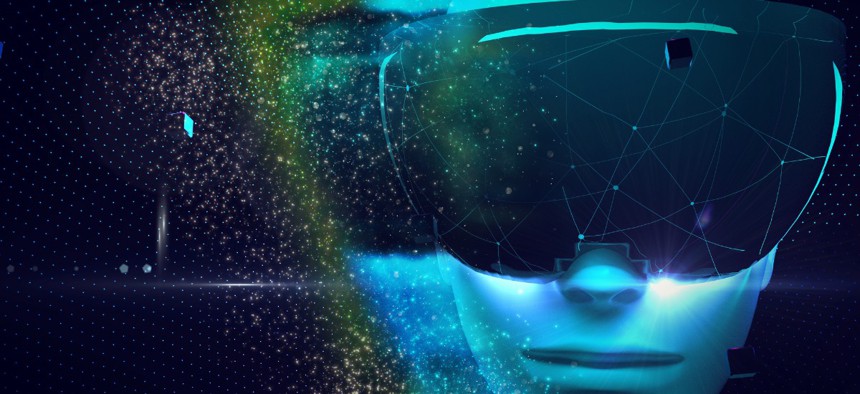VA’s Extended Reality Network Expanding Across Agency

Just_Super/iStock.com
There are more than 75 Veterans Health Administration sites using extended reality in some fashion.
Launched last fall, the Veterans Affairs Department’s Extended Reality Network is gaining steam and support among veterans and health care practitioners.
“VHA’s XR Network now, we have over 200 frontline staff actively involved in the network, the bring to us their resources and opportunities and we share what we’ve learned as well,” Dr. Anne Lord Bailey, chair of the XR Network and VHA emerging tech clinical specialist, said Tuesday.
Speaking at Nextgov’s Emerging Tech Summit, Bailey said the network has been engaging with industry, academic and other federal agencies to promote and improve the use of extended reality. Extended reality is an umbrella term that includes virtual, augmented and mixed reality technologies, and while commonly associated with the gaming industry, the technology is increasingly being used across VA sites to improve patient care. With it, veterans wear headsets to extend, simulate and navigate virtual worlds to deal with any number of ailments or conditions, including post-traumatic stress, anxiety, depression, chronic pain and even boredom.
“We now know at least 75 VA sites are using XR in some form or another, and we’ve been able to actively engage with 11 program offices to really gain and sustain that leadership support which is so critical anytime you want to do innovative healthcare transformation,” Bailey said.
VA is in the process of tabulating the number of veterans who’ve received some form of XR for care. However, at least one VHA site has used the technology with more than 300 veterans and more than 220 veterans have issued signed statements regarding their positive experience with the technology, according to VA Innovation Specialist Caitlin Rawlins. Rawlins was recognized by VA last year for her early and continued efforts employing virtual reality therapy for patient care at the Charles George VA Medical Center in Asheville, North Carolina. Her nascent efforts in the technology have helped evangelize and legitimize the technology across VA’s health care sites, which collectively provide healthcare services to more than 9 million veterans each year.
“It is beneficial to veterans in ways we didn’t even expect,” Rawlins said. “We’ve seen it decrease pain levels, decrease anxiety and relax patients in pain. If we’re able to bring that kind of relief to them in a non-pharmacological, non-invasive way that actually brings joy to a hospital where most people don’t feel a lot of joy—it’s not a place where people associate relaxation or fun.”
While XR’s technology was used early on for veterans in post-operative environments, Rawlins said its uses continue to multiply. Some VA surgeons may use augmented reality to help plan veteran surgeries, while veterans can use virtual reality tech during certain procedures.






